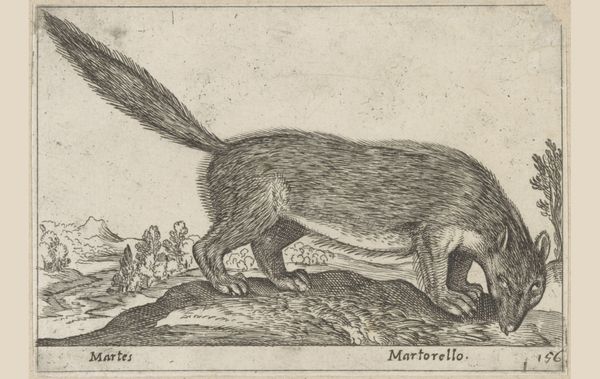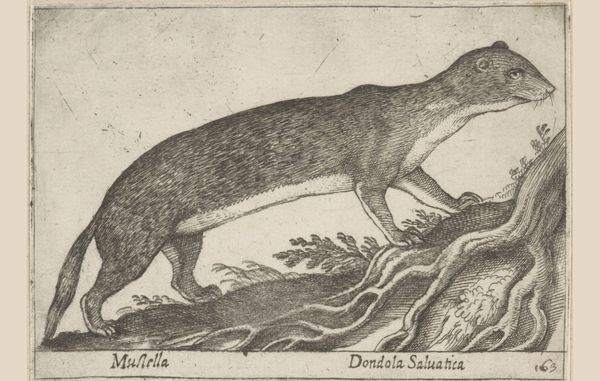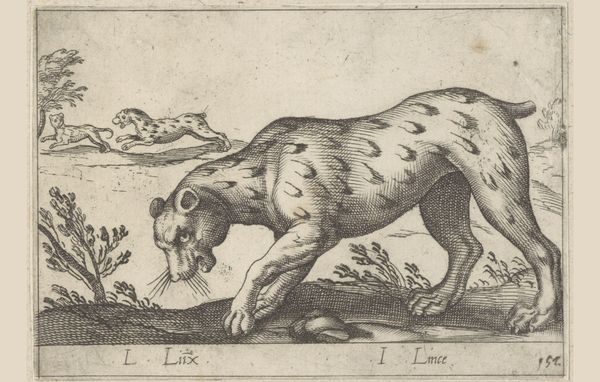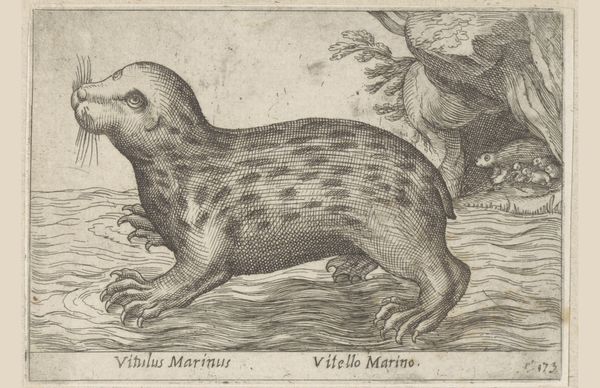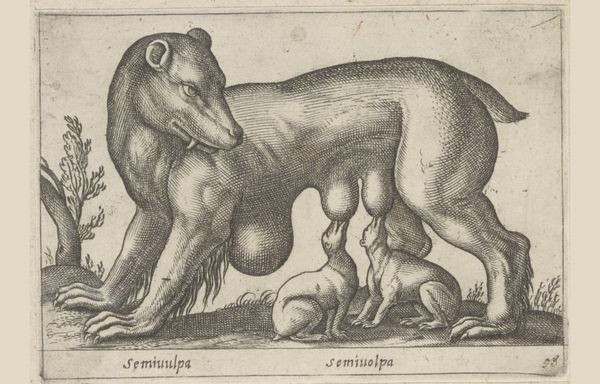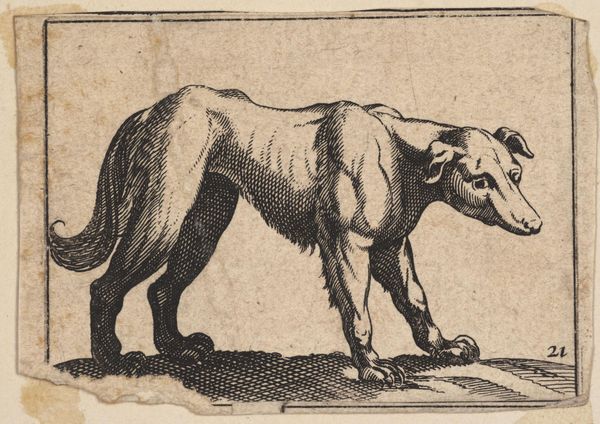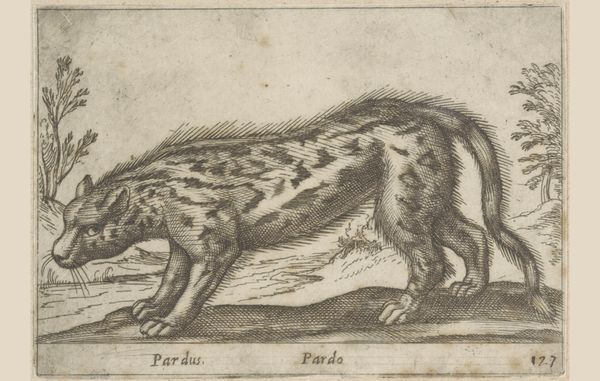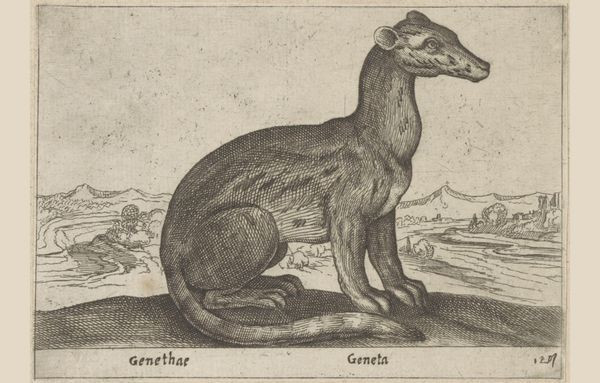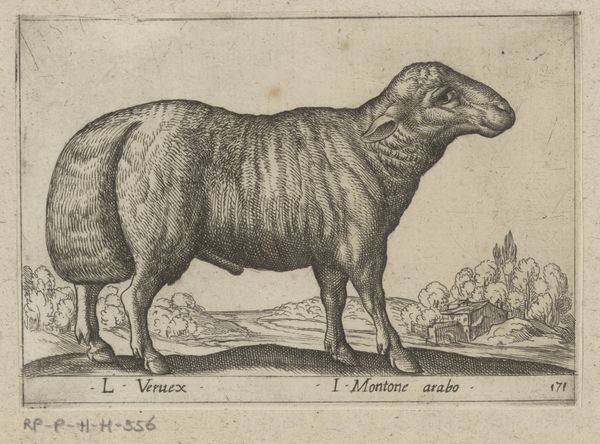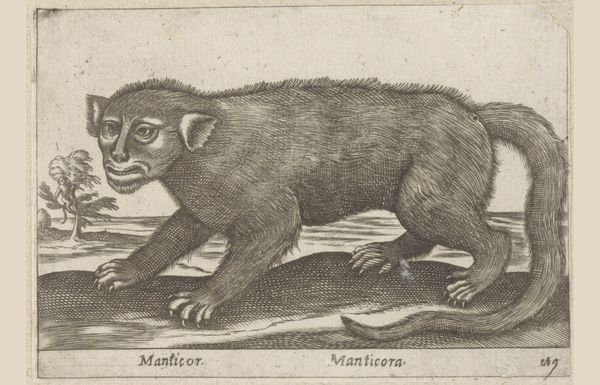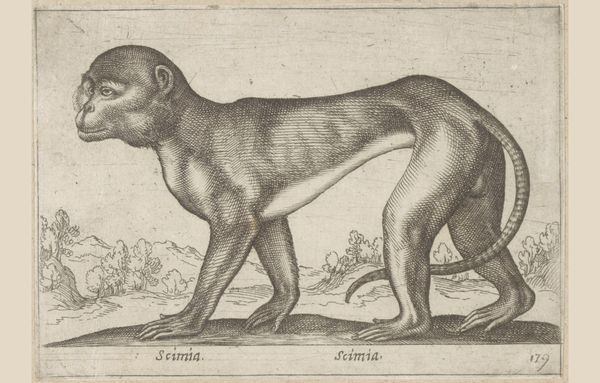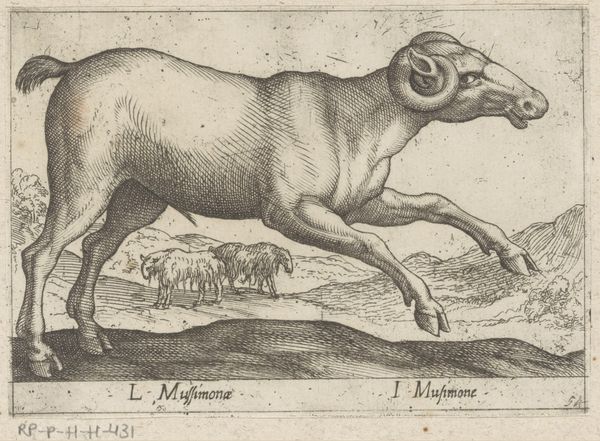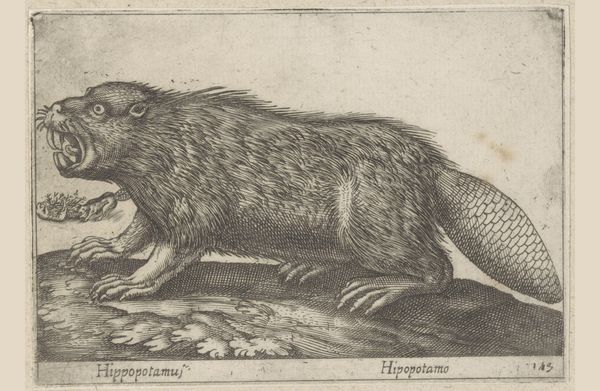
drawing, print, etching, engraving
#
drawing
# print
#
etching
#
11_renaissance
#
engraving
Dimensions: height 95 mm, width 137 mm
Copyright: Rijks Museum: Open Domain
Antonio Tempesta etched this diminutive plate, depicting a 'Marter' – a type of weasel – sometime around the turn of the 17th century. Note the animal's lithe form, its sharp claws and alert expression. The weasel, throughout history, has carried a rich symbolic weight. In ancient lore, it was often associated with stealth and cunning, traits that could be seen as either positive or negative. Egyptians revered it, while in European folklore, the weasel was sometimes linked to witchcraft, embodying a certain untamed, unpredictable energy. Consider how this echoes in depictions of other liminal creatures, such as the fox, which appears across cultures as both a symbol of wisdom and trickery. This duality touches upon our own subconscious understanding of the natural world – a realm that is at once beautiful and potentially dangerous. Over time, this image of the weasel, like all powerful symbols, resurfaces, evolves, and takes on new meanings.
Comments
No comments
Be the first to comment and join the conversation on the ultimate creative platform.
